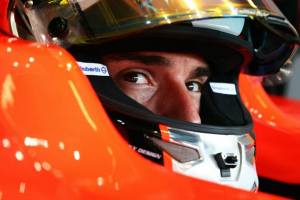Il gruppo formato dalla FIA per indagare sull’incidente di Jules Bianchi a Suzuka ha reso note le sue conclusioni in un report di 396 pagine. Non discutiamo i fatti, dobbiamo fidarci di quanto concluso dai dieci uomini che hanno formato il panel sulla base dei documenti, dei dati, che hanno potuto esaminare. Sarà anche così, ma non ci piace la forma. Le perizie tecniche (perché di questo si tratta) devono essere fredde e distaccate, ma Jules è Jules ed è nelle condizioni in cui è.
Le conclusioni andavano comunicate, le aspettavamo, se fosse emerso un problema tecnico non sarebbe cambiato niente per Jules, la macchina del tempo non sarebbe tornata indietro a 2 secondi prima, purtroppo. Ma in questo testo abbiamo trovato una freddezza che fa male, come se quei dieci uomini e la FIA stessa non avessero mai avuto a che fare con l’uomo Jules Bianchi.
 Tante cause che possono aver contribuito ma nessuna determinante… col senno di poi non aveva senso far uscire la SC dopo l’incidente di Sutil… se i piloti rispettassero le bandiere gialle… l’algoritmo del FailSafe (l’unica colpa potrebbe proprio ricadere su questo aggeggio)… purtroppo il trattore era lì… Bianchi non ha rallentato abbastanza per evitare di perdere il controllo… E poi le raccomandazioni su cui ragionare e introdurre: bandiere gialle, software, superlicenza (Jules non era un debuttante e viene da ridere pensando a Will Stevens che l’ha avuta sul filo di lana per scendere in pista ad Abu Dhabi e portare soldi alla Caterham… e all’asilo nido che avremo in pista nel 2015… i ragazzini saranno interrogati come a scuola per vedere se hanno studiato e chi non ha fatto i compiti -5 posizioni in griglia e al prossimo GP accompagnato dai genitori!), regolamenti da rivedere, rischi in F1.
Tante cause che possono aver contribuito ma nessuna determinante… col senno di poi non aveva senso far uscire la SC dopo l’incidente di Sutil… se i piloti rispettassero le bandiere gialle… l’algoritmo del FailSafe (l’unica colpa potrebbe proprio ricadere su questo aggeggio)… purtroppo il trattore era lì… Bianchi non ha rallentato abbastanza per evitare di perdere il controllo… E poi le raccomandazioni su cui ragionare e introdurre: bandiere gialle, software, superlicenza (Jules non era un debuttante e viene da ridere pensando a Will Stevens che l’ha avuta sul filo di lana per scendere in pista ad Abu Dhabi e portare soldi alla Caterham… e all’asilo nido che avremo in pista nel 2015… i ragazzini saranno interrogati come a scuola per vedere se hanno studiato e chi non ha fatto i compiti -5 posizioni in griglia e al prossimo GP accompagnato dai genitori!), regolamenti da rivedere, rischi in F1.
A noi tutto questo non piace, non ci sembra rispettoso nei confronti di Jules. Perché qui, signori, non si scappa: da questo documento che riportiamo integralmente esce un solo responsabile di quanto accaduto, il pilota, l’unico che non ha modo di difendersi, che purtroppo non può essere sentito. Non ci stupirebbe che qualcuno mandasse alla famiglia la fattura per i danni al trattore e spese varie, magari anche per aver rovinato lo spettacolo…
Chissà se ai piloti amici di Jules tutto questo piace… alla “grande famiglia della F1″… questa è la risposta di chi non ha avuto il coraggio di scrivere su queste conclusioni “quel trattore non doveva essere lì… faremo in modo che in futuro, dovessero ripetersi situazioni del genere, prima dell’intervento di un mezzo di soccorso entri la SC”. Una Formula 1 che dice che sarebbe il caso (dove possibile) di tenere in considerazioni le condizioni meteo del periodo quando si stende il calendario (e chi glielo dice a Bernie Ecclestone che la pioggia la vorrebbe anche nel deserto pur di avere più audience?).
 Questo dramma poteva essere almeno l’occasione per migliorare le cose, fare un ulteriore step per la sicurezza, anche se quella assoluta nel motorsport non ci sarà mai, purtroppo. Ma leggete attentamente, anche le parole singole: oggi, con questo documento, l’Accident Panel e la FIA non prendono decisioni, non fanno cambiamenti regolamentari. Ci sono “conclusions” e “recommendations“. A noi non bastano. Soprattutto non bastano a Jules Bianchi e alla sua famiglia. Siamo arrabbiati, no molto di più, per questo in apertura abbiamo volutamente messo una foto dell’incidente, perché tutti rivedano, rivivano, ricordino. E qualcuno si vergogni. #ForzaJules
Questo dramma poteva essere almeno l’occasione per migliorare le cose, fare un ulteriore step per la sicurezza, anche se quella assoluta nel motorsport non ci sarà mai, purtroppo. Ma leggete attentamente, anche le parole singole: oggi, con questo documento, l’Accident Panel e la FIA non prendono decisioni, non fanno cambiamenti regolamentari. Ci sono “conclusions” e “recommendations“. A noi non bastano. Soprattutto non bastano a Jules Bianchi e alla sua famiglia. Siamo arrabbiati, no molto di più, per questo in apertura abbiamo volutamente messo una foto dell’incidente, perché tutti rivedano, rivivano, ricordino. E qualcuno si vergogni. #ForzaJules
Barbara Premoli
—————————————–
 The following is a summary of the findings of the Accident Panel’s examination of the circumstances surrounding Jules Bianchi’s crash at the Japanese Grand Prix on 5 October, 2014 in Suzuka
The following is a summary of the findings of the Accident Panel’s examination of the circumstances surrounding Jules Bianchi’s crash at the Japanese Grand Prix on 5 October, 2014 in Suzuka
On lap 43 of the Japanese GP, Jules Bianchi lost control of his Marussia in Turn 7, and struck a mobile crane that was recovering Adrian Sutil’s Sauber, which had crashed the lap before. Bianchi suffered life-threatening injuries to his head, and was evacuated to hospital by ambulance.
The weather conditions at the time were rain and a deteriorating track condition, and the section of the track where the accident occurred was subject to double yellow flags, due to Sutil’s crash.
A review of all the evidence and other information about the events leading up to Bianchi’s accident has been carried out by the 10-man Accident Panel, appointed by the FIA. The Panel has issued a 396-page report on their findings with recommendations for improvements, many relevant to all of motorsport. This has been presented to the FIA World Motorsport Council.
Conclusions:
The review of the events leading up to Bianchi’s accident indicate that a number of key issues occurred, which may have contributed to the accident, though none alone caused it:
1. The semi-dry racing line at T 7 was abruptly narrowed by water draining onto the track and flowing downhill along it. Both Sutil, and Bianchi one lap later, lost control at this point in T 7.
2. Sutil’s car was in the process of being recovered by mobile crane when Bianchi approached Sectors 7 and 8, which include the part of T 7 where the recovery was taking place. Sectors 7 and 8 were subject to double yellow flags.
3. Bianchi did not slow sufficiently to avoid losing control at the same point on the track as Sutil.
4. If drivers adhere to the requirements of double yellow flags, as set out in Appendix H, Art. 2.4.5.1.b, then neither competitors nor officials should be put in immediate or physical danger.
5. The actions taken following Sutil’s accident were consistent with the regulations, and their interpretation following 384 incidents in the preceding 8 years. Without the benefit of hindsight, there is no apparent reason why the Safety Car should have been deployed either before or after Sutil’s accident.
6. Bianchi over-controlled the oversteering car, such that he left the track earlier than Sutil, and headed towards a point “up-stream” along the barrier. Unfortunately, the mobile crane was in front of this part of the barrier, and he struck and under-ran the rear of it at high speed.
7. During the 2 seconds Bianchi’s car was leaving the track and traversing the run-off area, he applied both throttle and brake together, using both feet. The FailSafe algorithm is designed to over-ride the throttle and cut the engine, but was inhibited by the Torque Coordinator, which controls the rear Brake-by-Wire system. Bianchi’s Marussia has a unique design of BBW, which proved to be incompatible with the FailSafe settings.
8. The fact that the FailSafe did not disqualify the engine torque requested by the driver may have affected the impact velocity; it has not been possible to reliably quantify this. However, it may be that Bianchi was distracted by what was happening and the fact that his front wheels had locked, and been unable to steer the car such that it missed the crane.
9. Bianchi’s helmet struck the sloping underside of the crane. The magnitude of the blow and the glancing nature of it caused massive head deceleration and angular acceleration, leading to his severe injuries.
10. All rescue and medical procedures were followed, and their expediency are considered to have contributed significantly to the saving of Bianchi’s life.
11. It is not feasible to mitigate the injuries Bianchi suffered by either enclosing the driver’s cockpit, or fitting skirts to the crane. Neither approach is practical due to the very large forces involved in the accident between a 700kg car striking a 6500kg crane at a speed of 126kph. There is simply insufficient impact structure on a F1 car to absorb the energy of such an impact without either destroying the driver’s survival cell, or generating non-survivable decelerations.
It is considered fundamentally wrong to try and make an impact between a racing car and a large and heavy vehicle survivable. It is imperative to prevent a car ever hitting the crane and/or the marshals working near it.
Recommendations:
A number of recommendations for improvements have been proposed, relevant in many cases to all of motorsport. They include the following:
1. A new regulation for double yellow flags:
Proposed new Appendix H Article (possibly under 2.4.5.1 b):
The Clerk of the Course will impose a speed limit in any section of track where double yellow flags are being displayed.
It is proposed that a Working Group, made up of FIA Race Directors and Stewards should meet and draw up detailed regulations and guidelines for the application of this new regulation, in time to apply it in 2015 across international circuit racing.
2. Safety critical software:
A review of safety critical software and measures to check its integrity will take place.
3. Track drainage:
Guidelines on circuit drainage will be reviewed, to include drainage off access roads.
4. 4-hour Rule:
Article 5.3 of the F1 Sporting Regulations states that:
However, should the race be suspended (see Article 41) the length of the suspension will be added to this period up to a maximum total race time of four hours.
It is proposed that a regulation or guideline be established such that the Start time of an event shall not be less than 4 hours before either sunset or dusk, except in the case of night races.
It is also recommended that the F1 Calendar is reviewed in order to avoid, where possible, races taking place during local rainy seasons.
5. Super Licence
It is proposed that drivers acquiring a Super Licence for the first time should undertake a course to familiarise themselves with the procedures used by F1 in running and ensuring the safety of an event.
It is also proposed that new licence holders pass a test to ensure that they are familiar with all the relevant regulations.
6. F1 risk review
Consideration will be given to a review of F1 risk, in order to ascertain whether there are any significant holes in the safety defences, such that an unforeseen combination of circumstances could result in a serious accident.
7. Tyres
It is part of the challenge of a racing driver to drive his car as fast as possible given the track conditions combined with the characteristics of his tyres. Although the characteristics of the wet weather tyres provided by Pirelli did not influence Bianchi’s accident or its outcome in any significant way, it is recommended that provision is made for the tyre supplier to develop and adequately test wet weather tyres between each F1 season, such that it is able to supply the latest developments to the first event.
Composition of the Accident Panel
Presidency
Peter Wright, President of the Safety Commission
Members
Ross Brawn, former Team Principal of Mercedes F1 Team, Brawn Grand Prix and former Technical Director of Scuderia Ferrari
Stefano Domenicali, former Team Principal of Scuderia Ferrari
Gerd Ennser, Chief Stewards’ representative
Emerson Fittipaldi, President of the FIA Drivers’ Commission, F1 Steward
Eduardo de Freitas, WEC Race Director
Roger Peart, President of the Circuits Commission, President of the ASN of Canada, F1 Steward
Antonio Rigozzi, Advocate, Judge at the International Court of Appeal of the FIA co-opted by the teams
Gérard Saillant, President of the FIA Institute and President of the Medical Commission
Alex Wurz, President of the GPDA, drivers’ representative




















